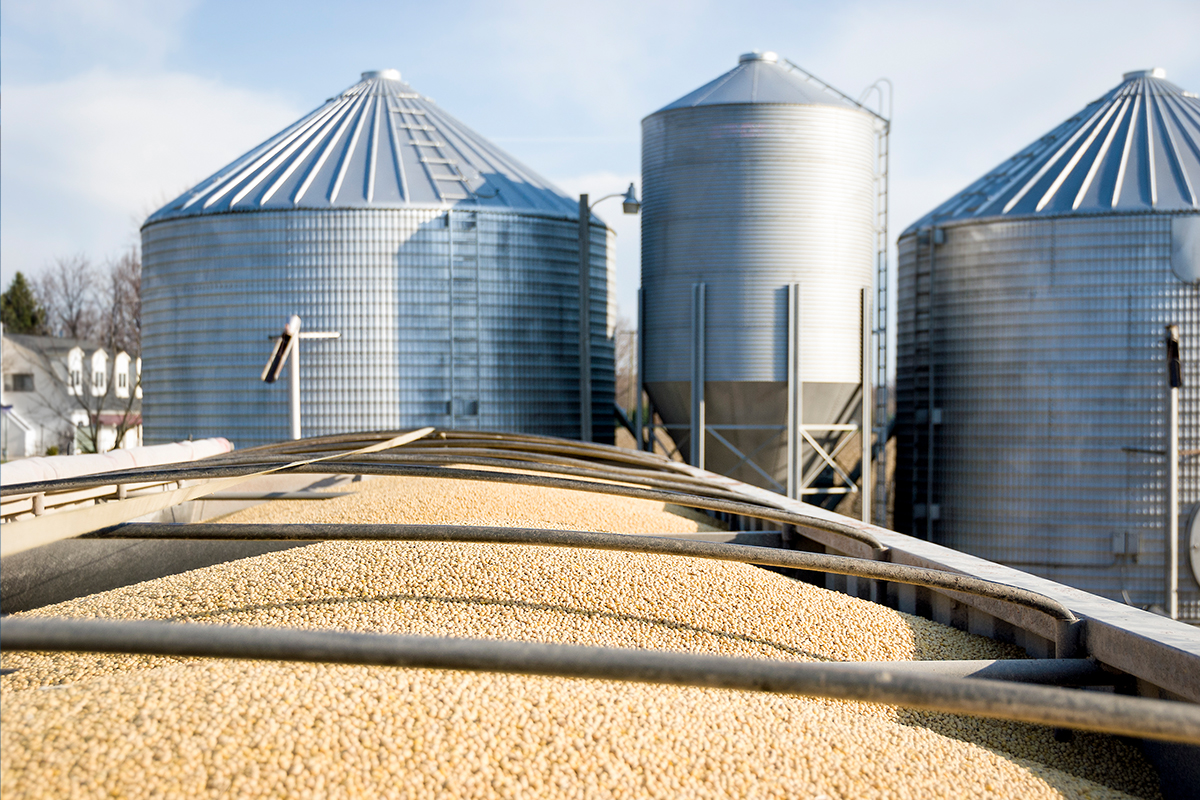
From the time soybeans leave the field until the moment they arrive at the processing plant for extraction, the storage conditions they endure can literally make or break your operation. Simply stashing seeds in a storage silo and forgetting about them until it’s time to start crushing can be a recipe for disaster. Proper soybean storage requires active oversight and constant monitoring to ensure that grains remain in optimal condition for processing the highest quality products.
By understanding the key conditions to measure and manage in your soybean storage system, you can optimize processing performance to capitalize on the maximum value of your seeds.
Here are the key factors to consider when storing soybeans before extraction.
1. Harvest timing
Soybeans should be harvested at an optimal moisture range of 13-15% to balance maximum weight and minimum losses. A moisture content above 18% causes threshing to become more difficult, and beans may be more easily bruised and damaged during harvest.
Likewise, beans may shatter more when harvested below 13% moisture, resulting in preventable field losses. For every percentage drop in moisture level below 13%, the market weight (and value) of the soybean decreases by about 1.15%. At $10/bushel, this represents a decrease in value of about 11.5 cents per bushel.
Harvesting during high humidity, such as early morning or late evening, may reduce shatter loss and mechanical damage. Avoid harvesting soybeans in dry, windy conditions to maintain ideal moisture levels and reduce losses.
Typically, unheated air will naturally dry soybeans to 13% moisture after harvest. But in cool, damp weather, supplemental heat may be required to dry freshly harvested beans to an acceptable level for storage. Low-temperature dryers are often recommended because soybeans can easily be damaged by air that is too hot (above 140 degrees Fahrenheit) or too dry (below 40% relative humidity).
2. Moisture level
Any grain can spoil quickly if the moisture level is too high. The high oil content of soybeans (around 20% by weight) makes them even more susceptible to mold and spoilage than other types of seeds, so moisture is a critical factor when managing soybean storage conditions.
As moisture levels increase, the length of time that soybeans can safely be stored decreases incrementally. Generally, the longer you store the beans, the lower the moisture level should be to promote safe storage. Soybeans should be stored at 13% moisture or less over winter (for up to six months), or 12% or less over one planting season (approximately a year). For longer-term storage, aim for moisture levels of 11% or less.
3. Temperature
Temperature plays an important role in managing soybean quality during storage. Generally, the warmer the temperature, the drier the soybeans must be to maintain the same quality and allowable storage time. The percentage of free fatty acids—which can negatively affect the quality of soybean oil—tends to increase with moisture, temperature, and time, so keeping soybeans cool is key to maintaining oil quality.
Soybean storage temperatures should stay between 35-40 degrees Fahrenheit during winter and between 40-60 degrees Fahrenheit in summer. These temperature ranges reduce mold and insect activity as well as moisture movement within the storage bin. Aeration fans can help moderate temperatures and moisture levels inside the soybean storage silos to maintain these ideal ranges.
4. Soybean quality
Maintaining clean, ideal soybean storage conditions can ward off most common pests, fungi, mold, and disease that could attack your seed supply.
The weevils, beetles, borers, and moths that typically target soybeans are more likely to infest damaged soybean kernels that have been cracked or broken during harvest or due to over-drying. Careful handling during harvest and transportation can minimize the presence of these pests.
Likewise, fungi tend to strike soybeans that have been submitted to high temperatures and humidity. Once beans have been cooled and dried to optimal storage conditions, the likelihood of fungal growth is greatly reduced.
Soybean storage in a nutshell
Soybeans stored in cool, dry conditions – generally, below 11-13% moisture and 60 degrees Fahrenheit—are relatively safe from mold, spoilage, fungi, and insects.
By maintaining proper moisture levels through aeration and temperature control, and routinely monitoring storage conditions, processors can prevent common soybean storage problems to preserve the quality of their supply until it’s time to start crushing.
While automated sensors, fan controllers, and other advanced technologies can help monitor soybean storage conditions over time, these tools should not replace regular visual inspection. Monitor stored soybeans at least weekly during the spring and summer months, and every two weeks during fall and winter, to watch for condensation, increasing temperatures, insect activity, and damage before these issues escalate into unmanageable problems.
Keeping a close eye on the contents of your silos to maintain the ideal soybean storage conditions can make the difference between a high-quality supply of potential processing profits and an infested bin full of wasted possibility.
For more information about preserving seed quality to achieve the best possible results from your processing system, contact Anderson International today.